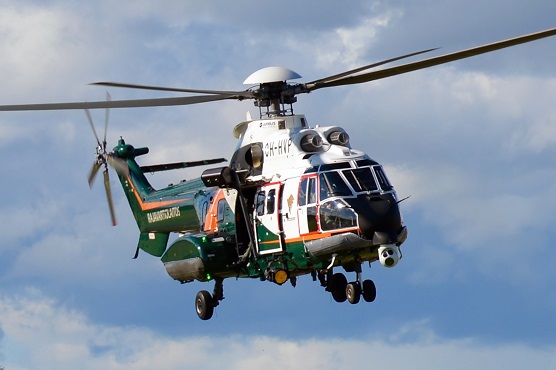Press release 2017-03-15 at 9:06
SYKE and The Finnish Border Guard
In 2016, the number of suspected illegal discharges of oil reported to Finnish authorities remained almost unchanged compared to the previous year. Eventually, 48 of the discharges were confirmed to be oil, whereas the corresponding number in 2015 was 47.
Investigations concerning illegal oil discharge were started in nine cases. The majority of the discharges were some dozens of litres that took place near harbours or shores. The largest individual discharge released as much as an estimated 1150 litres of oil into the sea.
The Baltic Sea is classified as a very sensitive marine area, because of which discharging oil into the sea is prohibited. The number of discharges in open sea areas has been on the decrease in recent years. However, seafarers are urged to also pay more attention to their activities in harbours in future.

An oil discharge photographed from a surveillance aircraft. © The Finnish Border Guard
Oil discharge surveillance is a joint international effort
Oil discharge surveillance is carried out in marine areas with the help of aerial surveillance and satellite imaging with the CleanSeaNet satellite imaging service of the European Maritime Safety Agency EMSA. In 2016, approximately 250 satellite images were taken from Finnish marine areas and any potential discharges detected in the images were always verified on site.
The Baltic Marine Environment Protection Commission (HELCOM) obliges all Baltic Sea states to carry out regular aerial surveillance in their marine areas. The sensors of the surveillance aircraft used by the Finnish Border Guard can detect oil discharges even through cloud cover, up to tens of kilometres away from its route. The aircraft are also equipped with vessel detection devices.

The new H215 Super Puma helicopter of the Finnish Border Guard that can also be used in oil discharge surveillance. © The Finnish Border Guard
In 2016, the Finnish surveillance aircraft patrolled the Baltic Sea for a total of 484 hours. The most active shipping lanes are surveyed in cooperation with other countries, particularly Sweden and Estonia. Finland also participates actively in international surveillance operations in which specific marine areas are more extensively surveyed by the surveillance aircraft of several countries.
In June, the Finnish Air Patrol Squadron's DO228 surveillance aircraft and its crew, together with Finnish Environment Institute, participated in the ‘Oil On Water’ exercise in Stavanger, Norway. Also Norway, France, and the United States took part in the exercise. The main focus in the exercise was to test the use of oil detection equipment to support operative oil spill response.
More information
Oil discharge surveillance
Administrative Officer Inspector Jari Rintamaa, Finnish Environment Institute
+358 295 251 565, firstname.lastname@ymparisto.fi
Investigations of oil discharge
Maritime Safety Advisor Pekka Parkkali, The Finnish Border Guard
+358 295 421 154, firstname.lastname@raja.fi
Images
Copyright The Finnish Border Guard.